20 May 2019
From 18 to 20 October 2019 it will take place worldwide the octave
edition of the Nasa Space Apps Challenge 2019
Overview
Space Apps is an international hackathon where everyone, regardless of
profession and education level, can participate. In different towns of the world
many teams gather and commit to offer new innovative ideas about different
topics proposed by Nasa.

For more information:
Space Apps in Brescia
Last year for the first time Brescia took part to the hackathon, and
organized one of the more than 200 events in all around the world
(worldwide more than 18,000 participants in 75 different countries).
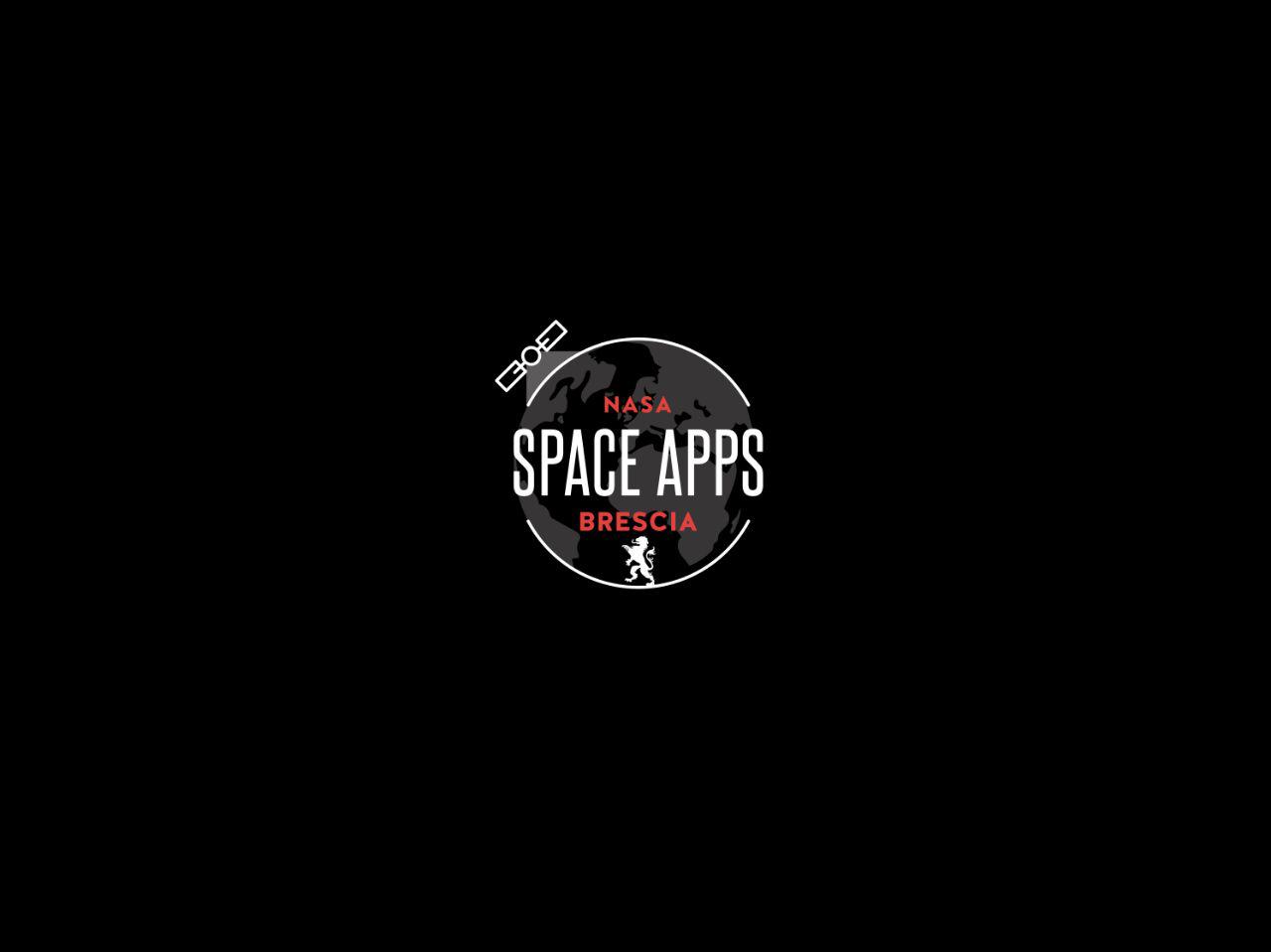
Last year’s official page
Instagram event’s page
The role of the Student Branch
This year the Student Branch is engaged to organize the event. Our role is to
participate actively in the organization, publicize everything during these
months through our official channels and part of the staff at the event. This is
an opportunity for the Branch, because it allows us (members) to take part of
a collaboration in a real job activity, networking and the possibility to know
important people in the sector. Indeed the event involves prominent
personalities that they will judge participants ideas (in the link above the
judges’s instagram page).
15 Apr 2019
With the project “Blindo” the team commit to create an educational device for blind students which allows them to study in a better way.
The flexibility of this device makes him usable in multiple ways.
“Blindo” allows the users to link an audio file with a physical button in a simple and intuitive way so that all the users will find themselves comfortable with this tool.
 work in progress
work in progress
The blind user could select one of the buttons and listen to the audio file linked with the specific button wearing head-phones or using an external speaker.
The sighted user instead could decide the suitable way of using “Blindo”:
record an audio file using a microphone connected with the device or upload an existing file from USB flash drive.
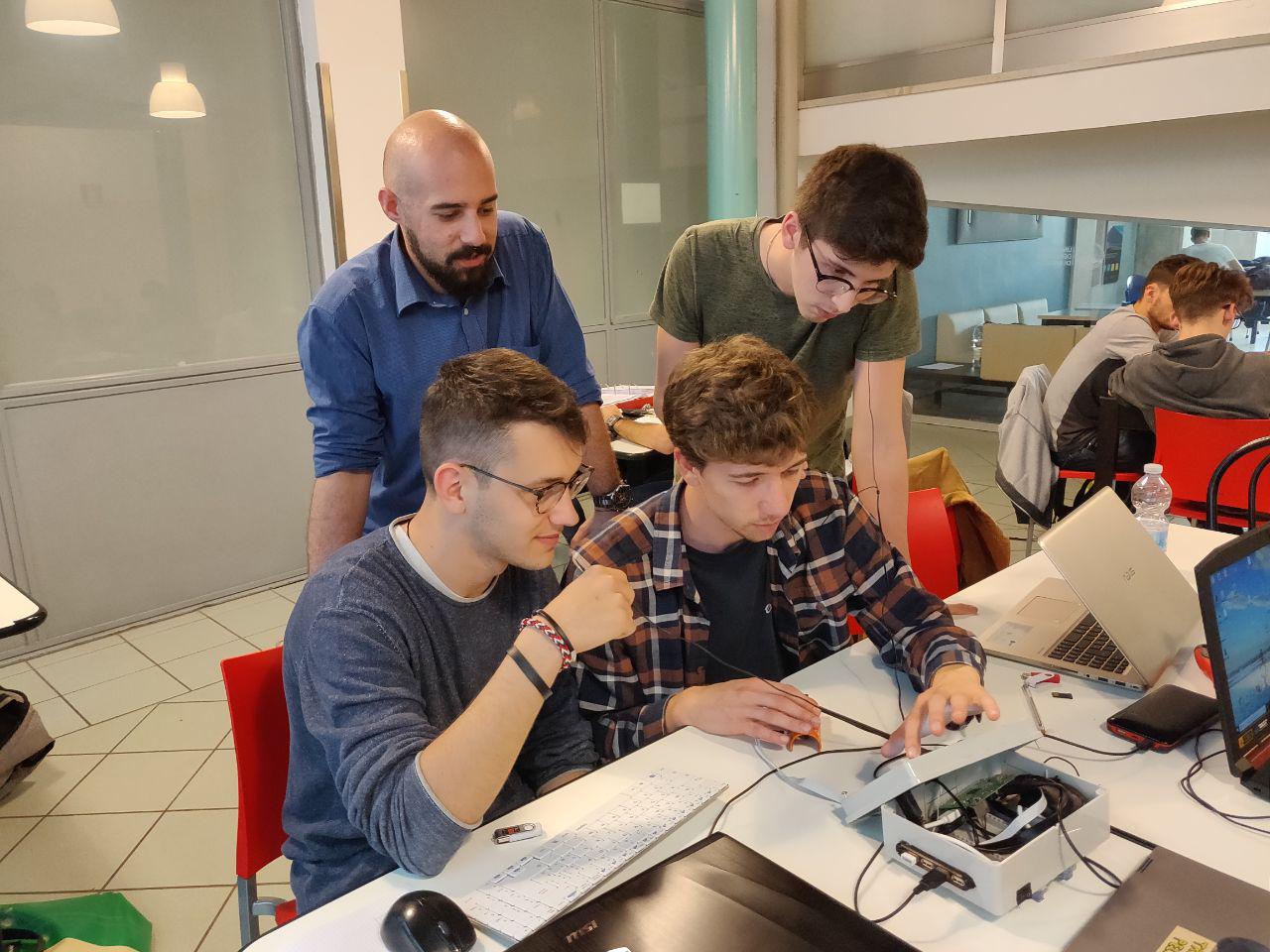 The team recording an audio file for tests
The team recording an audio file for tests
The connection between the audio file and the physical button is realized using a clean and simple graphic interface: in this way the sighted user will be independent and able to easily change the associations or add new buttons.
The capacitive touch screen was indeed chosen to give a better user experience which is the focus of this project.
“Blindo” first prototype was developed using a Raspberry Pi 3,as a single-board computer and the software was programmed entirely in Python3.
Members of the team
- Yari Bussi (responsible contact) yaribussi@ieee.org
- Diego Berardi
- Samuele Ponzin
- Massimiliano Tummolo
- Simone Caldarella (observer)
30 Mar 2019
After the success of the IEEE Student Contest, held by the Student Branch of Brescia in the past year (2018) during the IEEE International Workshop on Metrology for Industry 4.0 & IoT, this year the Student Branch is collaboring in the organization of an Hackaton in occasion of the MetroInd4.0&IoT 2019.
 The Instrumentation and Measurement (IM) Italy Chapter, the IEEE Sensor Council and the IEEE Student Branch of Naples, in cooperation with IEEE Student Branch of Brescia and of Università Campus Bio-Medico di Roma, are proud to announce the MetroInd4.0&IoT 2019 IEEE Student Hackathon, which will be held during the 2019 IEEE International Workshop on Metrology for Industry 4.0 & IoT (MetroInd4.0&IoT).
The Instrumentation and Measurement (IM) Italy Chapter, the IEEE Sensor Council and the IEEE Student Branch of Naples, in cooperation with IEEE Student Branch of Brescia and of Università Campus Bio-Medico di Roma, are proud to announce the MetroInd4.0&IoT 2019 IEEE Student Hackathon, which will be held during the 2019 IEEE International Workshop on Metrology for Industry 4.0 & IoT (MetroInd4.0&IoT).
For detailed information see official event website.
What is MetroInd4.0&IoT?
MetroInd4.0&IoT is organized with two principal aims:
- clarify the contribute of metrology that it has today for the industry 4.0 and IoT developping;
- discuss new opportunities offered by industry 4.0 and IoT to develop new equipments and measurement systems.
The ultimate aim of MetroInd4.0&IoT is to connect people who work at the developping of instrumentation and measurement systems for industry 4.0 and IoT. There exists a particular attention regarding new tecnologies for metrologically assisted production in industry 4.0 and the developping of measurement components, sensors, and conditioning systems, the latter are also intrested in calibration methods, tests and electronic measurements.
05 Dec 2018
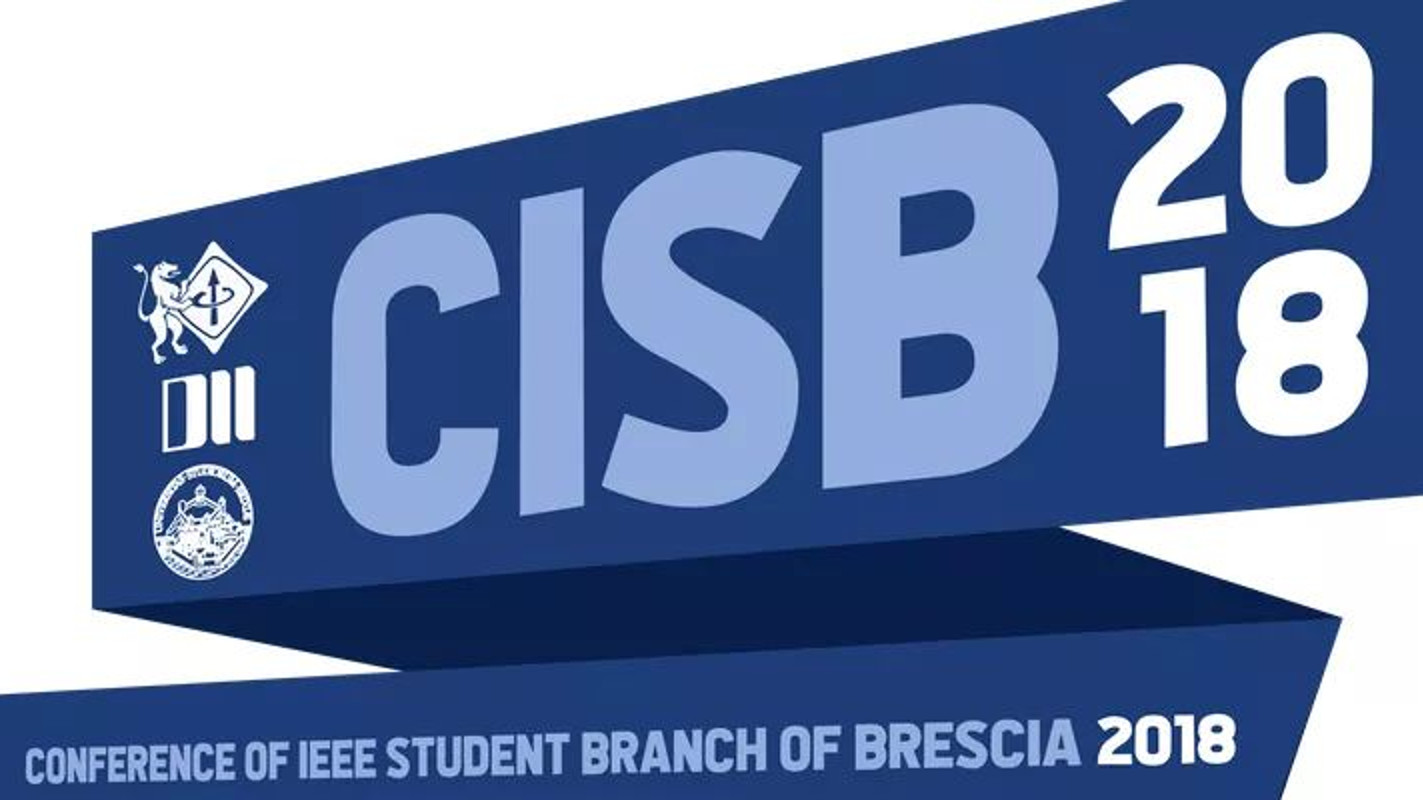
The first edition of the Conference of IEEE Student Branch of Brescia (CISB) has reached its end on evening of December, 5 2018.
Conference Organization
The first edition of CISB was first proposed by Massimo Bono. Quickly, several members of the branch took part in the project: Paolo Pasquali supported the event both as the co-organizer and as the main conference chair.
The Publicity Commitee, lead by Nicola Onofri, had an essential role in the project: thanks to Michele Dusi and Andrea Rossi, the publicity commitee tremendiously helped by informing the students about this event and by keeping the attention high on its social media using incredible professional art graphics. Furthermore, they developed some quite interesting quizzes to maintain high the involvement about the conference speakers both on Facebook and on Instagram. The Publicity Commitee was the one managing Eventbride registrations as well: thanks to them, registrations for CISB event were greater than expected! Emanuele Richiedei volonteered for the event photographer and took amazing shots of the event itself!
L’Evento
The event started at 9AM when the organizers opened the Aula Consiliare room. In the morning there were three presentations, which got the students interested, each interleaved with 15 coffee break times. At 15:45, after a well deserved lunch, the public returned to listen two additional talks till the end of the event, closed by the Student Branch Chair Simone Caldarella.
The conference took place at Università degli Studi di Brecia, and the talk schedule was the following one:
- [09:30->10:15] Bono Massimo in Introduction to Aspect Programming in Java
- [10:30->11:15] Pellegrini Dario in Kotlin: getting started
- [11:30->12:30] Caldarella Simone in Convolutional Networks
- [15:45->16:45] Rossi Andrea in Docker Container: Dev in your way!
- [17:00->18:00] Brancatisano Nikita in GaSP: A Unity3D Game
Results
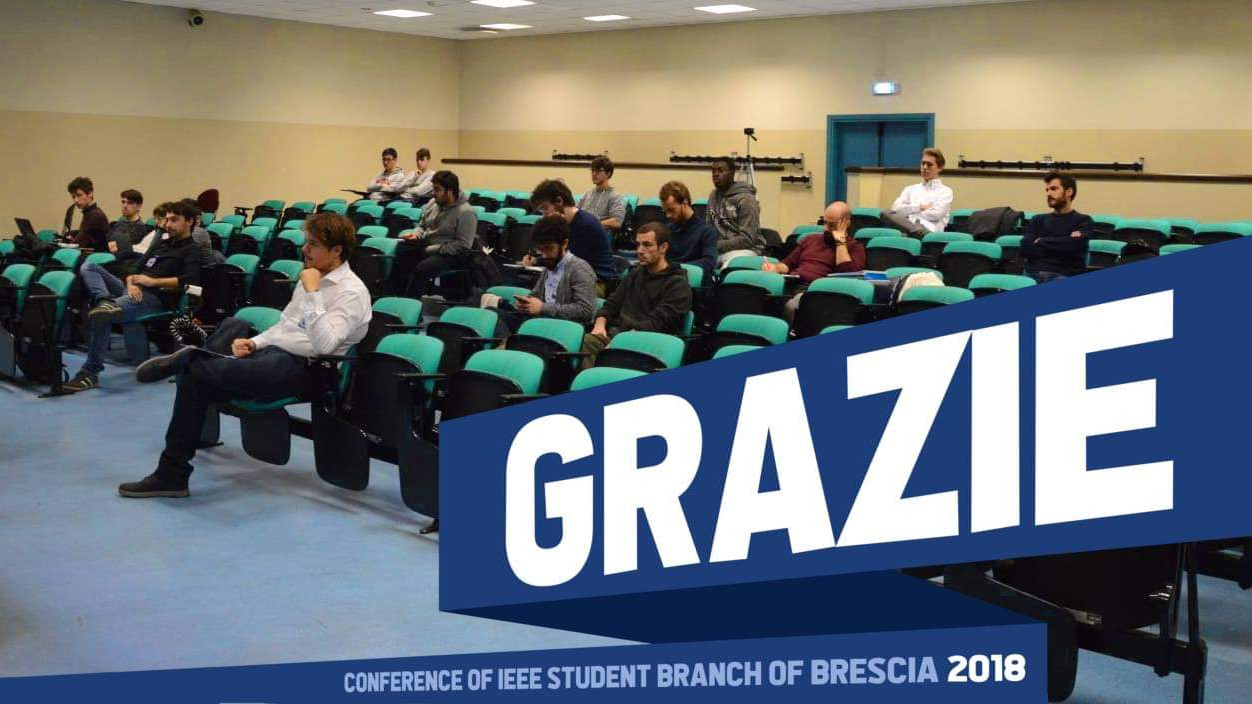
The conference took, as per organizers schedule, a whole day. There were some technical difficulties and some unexpected delays, but the organizers were able to efficiently react and handle them flawlessly: in particular the organizers had to update on the last minute the schedule to ensure both the public and the speaker could join the event.
The first edition of CISB is considered a success sine we were able to involve 46 students. If we count out the members of the Student Branch, a total of 33 students were interested in the talks. Some of them fully joined the conference, from start to finish. The project was completed with the complete support of Università degli Studi di Brescia: the university provided both the room (Aula Consiliare) and the nulla osta for the usage of both unibs and DII logos, used by the Publicity Committee while developing the publicity material for the Student Branch social media.
This terrific experience is huge success for the Student Branch and for sure the members gained a lot of knownledge about managing public events.
Are you interested in joining the next edition of CISB? Follow the event page (/cisb.md)!
11 Nov 2018
With the project “AI into the wild” the goal to achieve was testing and bringing on their limits the solving capabilities of a CNN (Convolutional Neural Network) in a Face Recognition task.
What is a CNN?
CNN is a convolutional neural network, a program that can learn and distinguish, thanks to machine learning, a set of images and categorize them through features extrapolated from a Data-set, following the user choices.
What is AI into the wild?
The program takes advantage of two heavily used AI frameworks, Tensorflow and OpenCV. The project consists of realizing a convolutional network using Tensorflow that can extrapolate some features from the images, OpenCV to find faces from an image and at the end through transfer learning give to the convolutional network the ability to categorize the various faces.
How doew the program work?
At the beginning the program asks the user a 20 seconds video for every person to recognize. Then the neural network is trained by using the dataset (about 200 images extrapolated from the video) and gives an accuracy index. Now it’s all about throwing an image with one or more people and the algorithm will output the same image with a box about recognized faces with the name written below and the accuracy percentage.
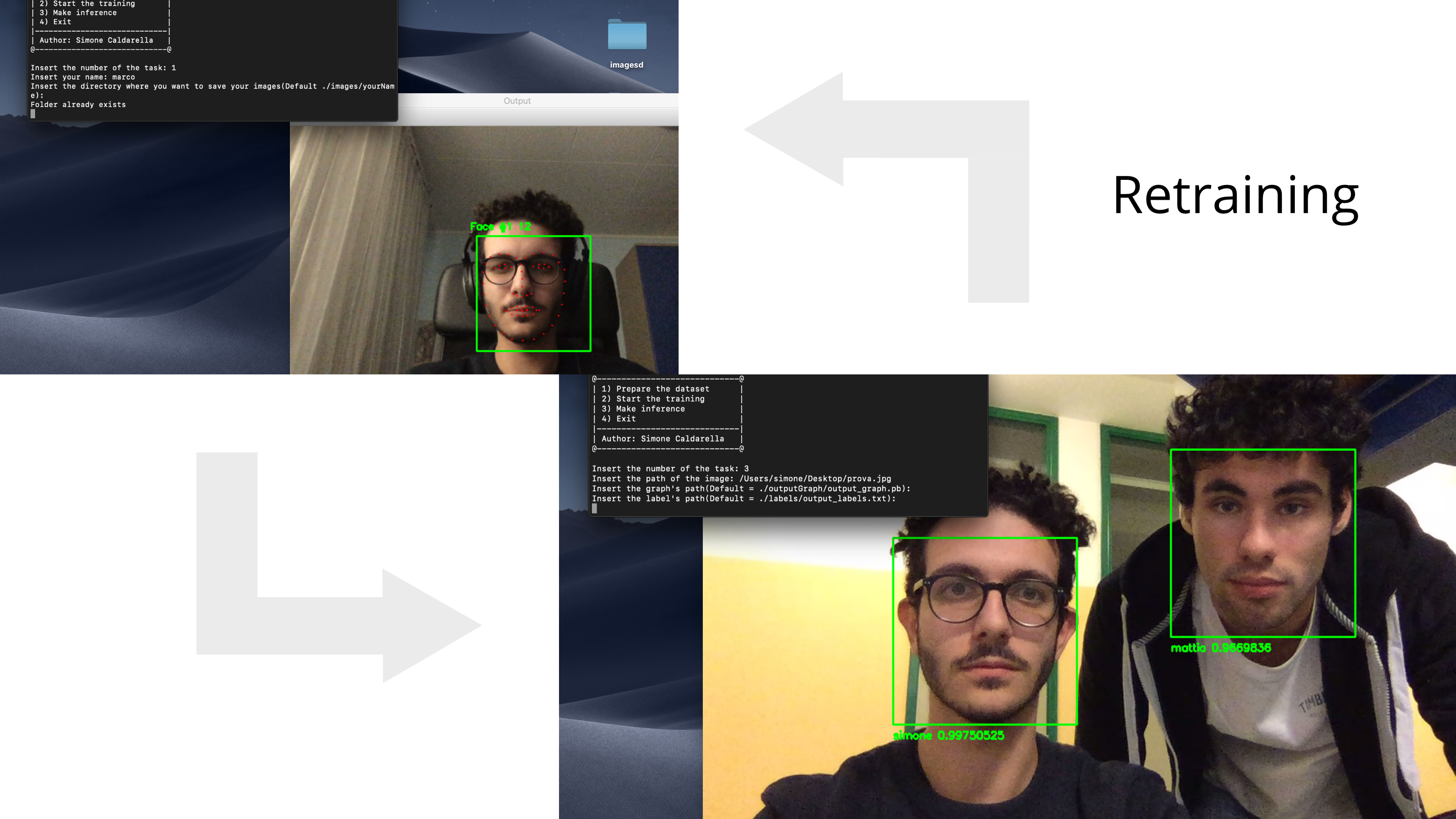
Project Members
Simone Caldarella (Referent)
simone.caldarella.it@ieee.org
Massimo Bono (Observator)


 work in progress
work in progress The team recording an audio file for tests
The team recording an audio file for tests The Instrumentation and Measurement (IM) Italy Chapter, the IEEE Sensor Council and the IEEE Student Branch of Naples, in cooperation with IEEE Student Branch of Brescia and of Università Campus Bio-Medico di Roma, are proud to announce the MetroInd4.0&IoT 2019 IEEE Student Hackathon, which will be held during the 2019 IEEE International Workshop on Metrology for Industry 4.0 & IoT (MetroInd4.0&IoT).
The Instrumentation and Measurement (IM) Italy Chapter, the IEEE Sensor Council and the IEEE Student Branch of Naples, in cooperation with IEEE Student Branch of Brescia and of Università Campus Bio-Medico di Roma, are proud to announce the MetroInd4.0&IoT 2019 IEEE Student Hackathon, which will be held during the 2019 IEEE International Workshop on Metrology for Industry 4.0 & IoT (MetroInd4.0&IoT).

